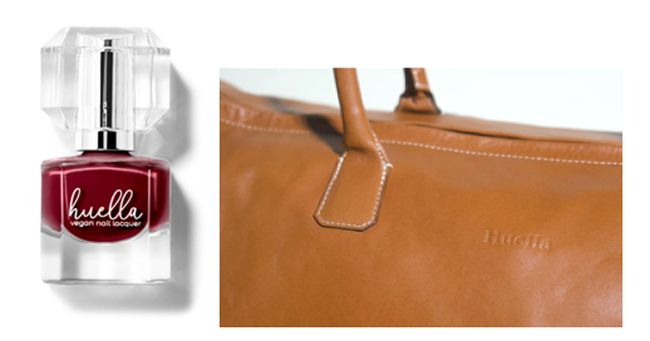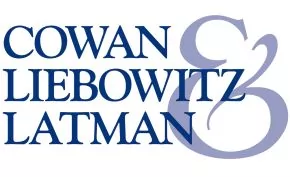- with readers working within the Healthcare and Media & Information industries
The fashion industry is known for its diverse range of products and services, from clothing to handbags, jewelry, and retail store services. When it comes to registered protection for trademarks, the U.S. Patent and Trademark Office (USPTO) generally considers such goods and services to be "related." In some cases, it has found cosmetics, including beauty products and nail polish, as also related. For this reason and others, it is important to conduct a trademark search that covers potentially related goods and services prior to filing a trademark application or expanding into a new category of goods and services.

Trademark Searches Covering Relating Goods and Services Are Important
When clearing a new mark or expanding into a new product category, it's crucial to conduct a comprehensive trademark search that covers potentially related goods and services.
A comprehensive trademark search, typically covers:
- U.S. federal trademark registrations and pending applications
- U.S. state trademark registrations
- Business names
- Domain names
- Common law and Internet uses
- International registrations under the Madrid Protocol
This broad search scope helps determine whether a new mark is available for use and registration. In some cases, a more limited search that covers the USPTO and common law uses on the Internet may be sufficient, such as when clearing a secondary mark or seasonal style name, or a mark for use on a website where it can be easily changed. In either case, it's important to understand that the USPTO generally considers the following goods and services to be related to clothing in Class 25, even though they fall into different classes:
- Jewelry (Class 14)
- Handbags (Class 18)
- Retail store services (Class 35)
The USPTO maintains a full list of "coordinated classes," which can be found at USPTO.gov. However, the USPTO may nevertheless determine that goods or services that fall under other classes are related, even if the USPTO has not grouped them within a "coordinated class." Furthermore, a follow-up trademark search after six months may be prudent, because the Paris Convention affords a right of priority to a U.S. application filed within six months of the filing date of a foreign application in a Convention country, as long as it is for the identical mark and for the same goods or services.
An Illustrative Related Goods Case
A recent non-precedential case illustrates the importance of (1) searching for potentially related goods and services and (2) taking into account that goods (such as cosmetics) not grouped or "coordinated" on the USPTO's "coordinated classes" list may nevertheless be deemed "related."
In In re Huella Studio LLC, Serial No. 97751731 (T.T.A.B. May 7, 2025), the Examining Attorney refused registration of the mark HUELLA for leather bags in Class 18, due to a prior registration for HUELLA for cosmetic products in Class 3. In support of the refusal, the Examining Attorney pointed to 15 third-party use-based registrations covering both Classes 3 and 18 for cosmetics and bags, as well as screenshots from fashion company websites, including the CHANEL, DIOR, GUCCI, ZARA, TOM FORD, YSL, VICTORIA BECKHAM, HERMÈS, CAROLINA HERRERA, CHRISTIAN LOUBOUTIN, and PRADA websites, showing use of the same marks for both types of goods.
Applicant attempted to distinguish its brand from the Examining Attorney's evidence, by arguing the cited marks "are famous designer brands" associated with designers who license their names for a wide range of products, but absent from this evidence, was a showing that either Applicant or the cited mark owner is a designer.
The TTAB affirmed the refusal. While it agreed that in some cases the marks of well-known or famous designers may have limited probative value in demonstrating the relatedness of goods, the TTAB nevertheless found that an inherent relationship exists between Applicant's leather bags and the cited mark owner's cosmetic products, because the "leather bags are broad enough to encompass leather makeup bags for storing cosmetics." Furthermore, the TTAB presumed that the respective trade channels and consumers overlapped, because neither the cited registration nor the application contain any limitations on channels of trade or consumers.
Key Takeaways and Practical Implications
It is crucial to conduct trademark searches that cover potentially related goods and services, and to understand the USPTO's perspective on related goods and services, before adopting a new mark or expanding into a new product category.
However, even if an application to register a mark is blocked because of a prior registration or application for an identical or similar mark for arguably related goods or services, this still may not prevent actual use of the new mark in the U.S. An analysis of the strength or weakness of the respective marks, as well as marketplace factors, such as differing channels of trade, customers, or trade dress, may lead to the conclusion that there is no likelihood of marketplace confusion, even if registration of the mark may not be possible.
The content of this article is intended to provide a general guide to the subject matter. Specialist advice should be sought about your specific circumstances.


